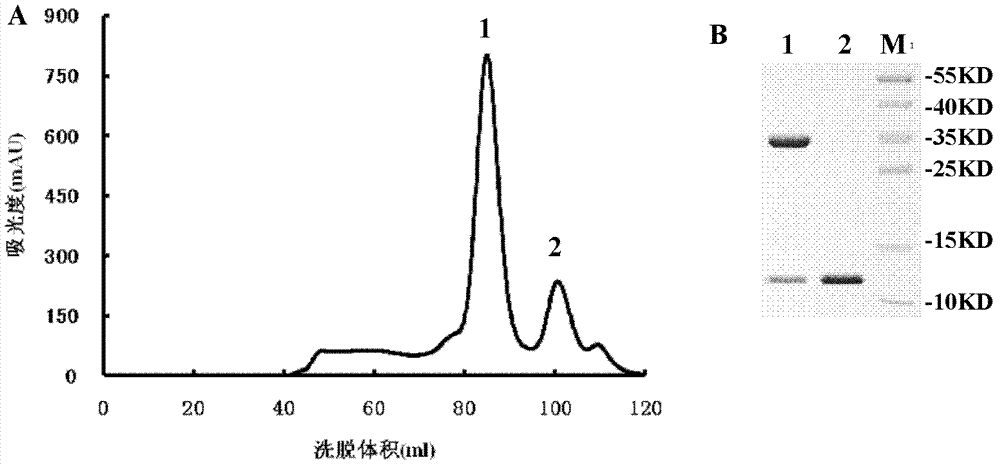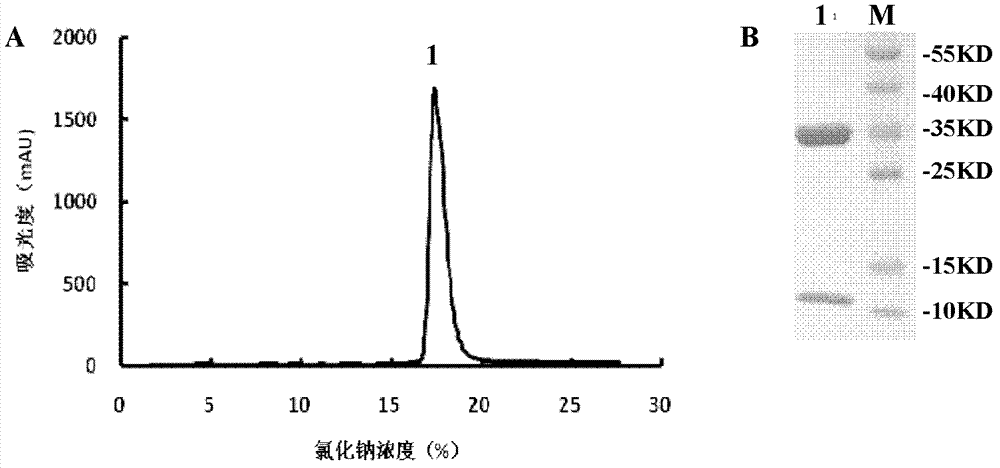CTL epitope polypeptide of porcine reproductive and respiratory syndrome virus (PRRSV) and application thereof
A technology of recombining viral vectors and expression cassettes, applied in the fields of application, antiviral agents, viral antigen components, etc., can solve problems such as ambiguity of the method and not involving the restriction of the SLA-I allele of the pig species
- Summary
- Abstract
- Description
- Claims
- Application Information
AI Technical Summary
Problems solved by technology
Method used
Image
Examples
Embodiment 1
[0077] Example 1, Selection and Synthesis of CTL Epitope Polypeptides of Porcine Reproductive and Respiratory Syndrome Virus
[0078] According to the NetMHCpan 2.0server (http: / / www.cbs.dtu.dk / services / NetMHCpan) website, the PRRSV-derived CTL epitope polypeptide that SLA-I is restricted to bind is predicted, and an amino acid sequence is selected on the NSP9 protein of PRRSV It is the CTL cell epitope polypeptide of sequence 1 in the sequence listing (its nucleotide sequence is sequence 2 in the sequence listing, named NSP9 -TMP ), polypeptide NSP9 -TMP It has a higher affinity prediction score (0.540) for SLA-I. Peptide NSP9 -TMP Send to Beijing Zhongke Yaguang Biotechnology Co., Ltd. for synthesis, and purify by HPLC (High Performance Liquid Chromatography), with a purity of ≥90%. And identified by mass spectrometry (MS).
Embodiment 2
[0079] Embodiment 2, the binding ability of the CTL epitope polypeptide of porcine reproductive and respiratory syndrome virus and SAL-I molecule is detected by protein folding renaturation experiment
[0080] 1. Preparation of porcine SAL-I molecular light chain β2m inclusion body protein
[0081] The construction process of the β2m inclusion body protein recombinant prokaryotic expression vector is as follows: DNA (nucleoside The acid sequence (as shown in Sequence 4 in the sequence table) was inserted between the restriction sites EcoR I and HindIII of the prokaryotic expression plasmid pET-21a(+), to obtain a recombinant expression plasmid named pET-21a(+) / sβ2m.
[0082]The preparation process of the light chain β2m inclusion body protein is as follows: (1) Transform the pET-21a(+) / sβ2m plasmid into BL21(DE3) competent cells, and culture at 37°C overnight. (2) Pick a monoclonal colony and inoculate it into 100 mL of LB liquid medium containing Amp at 37° C. and 200 rpm fo...
Embodiment 3
[0093] Example 3. Detection of CTL Epitope Immunological Activity of Porcine Reproductive and Respiratory Syndrome Virus by Tetramer Technology
[0094] 1. Preparation of porcine SAL-I molecular heavy chain inclusion body protein with BirA substrate peptide (BSP) sequence added to the carboxy-terminus
[0095] The extracellular domain amino acid (amino acid sequence is as the sequence in the sequence listing) of porcine SAL-I class molecular heavy chain SLA-I (SLA-1*1502, GenBank No.HQ909439) encoding the sequence of adding BirA substrate peptide (BSP) at the carboxy-terminus 7) DNA molecule (nucleotide sequence as shown in sequence 8 in the sequence table) is inserted between the restriction sites EcoR I and Hind III of the prokaryotic expression plasmid pET-21a (+), to obtain the recombinant expression plasmid, Designated as pET-21a(+) / SLA-1*1502-BSP. The specific preparation process of the porcine SAL-I molecular heavy chain inclusion body protein (named SLA-1*1502-BSP) wi...
PUM
 Login to View More
Login to View More Abstract
Description
Claims
Application Information
 Login to View More
Login to View More - R&D
- Intellectual Property
- Life Sciences
- Materials
- Tech Scout
- Unparalleled Data Quality
- Higher Quality Content
- 60% Fewer Hallucinations
Browse by: Latest US Patents, China's latest patents, Technical Efficacy Thesaurus, Application Domain, Technology Topic, Popular Technical Reports.
© 2025 PatSnap. All rights reserved.Legal|Privacy policy|Modern Slavery Act Transparency Statement|Sitemap|About US| Contact US: help@patsnap.com



